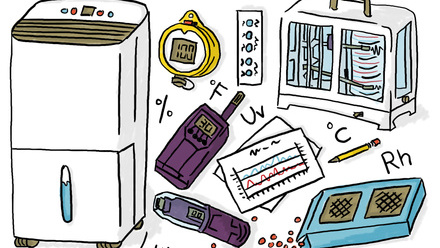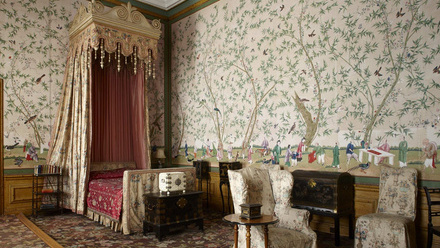Join the AIC's Wooden Artifacts Group for the first of two upholstery conservation themed webinars
This event will feature two talks. In the first, upholstery conservator Heather Porter and furniture conservator Cathy Silverman will give an introduction to the field of upholstery conservation, and explore some of its key challenges. In the second, upholstery and textile conservator Nadine Kilchhofer will present a case study – the treatment of an 18th century sofa – including the examination and treatment of textile elements. The talks will be followed by a Q&A.
The webinar will be recorded and available for later viewing for registered attendants. The second event on the theme is planned for September.
Upholstery Conservation: An Introduction to the Field and Today’s Key Challenges
with Heather Porter and Cathy Silverman
The work of an Upholstery Conservator is a niche area of specialism that requires wide-ranging familiarity of textile conservation, upholstery, and furniture construction. To ensure high standards of treatment, the ability to understand and describe historic upholstery materials and techniques, evaluate condition, and undertake practical upholstery is necessary. There are two distinct aspects: upholstery conservation - where upholstery materials such as the showcover, trimmings, interior textiles, springs, and stuffing materials require treatment; and conservation upholstery - where upholstery needs to be replaced, often using conservation materials and innovative techniques to limit damage to the frame. Complex treatments frequently require a combination of both.
The original generation of museum-employed upholstery conservators who began their careers in the 1980’s developed these skills on the job over many decades. Several offered internship and fellowship opportunities to students and young professionals allowing these skills to be passed on. However, on both sides of the Atlantic, these experienced English-speaking upholstery conservators have now retired, leaving behind their publications as the only resource for the current generation. Lack of succession-planning and very limited university-level training in upholstery conservation has resulted in an overall reduction in skills and knowledge. Consequently, there are fewer experienced upholstery conservators now in institutional employment, reducing opportunities to pass knowledge to the next generation.
The future of upholstery conservation will likely depend on broader collaboration between multiple professionals, perhaps by increased sharing of knowledge at an international level, in both formal presentations, workshops and conferences and informal virtual discussions and guidance. An open dialog about how best to support conservators who find themselves facing the prospect of conserving upholstery could open the way for new approaches to assessment and treatment.
Every Tack Tells a Story - Textiles inside Upholstered Furniture
with Nadine Kilchhofer
In upholstery, each textile has a specific function and is typically attached to the frame using tacks along the wooden frame. Understanding the role and placement of these textiles can provide valuable clues about the condition and authenticity of upholstered furniture.
By examining tack patterns, such as empty holes or tacks that no longer serve a purpose, conservators can identify alterations made over time. Remnants of old textiles sometimes remain beneath tack heads, and the presence of large, evenly spaced nail holes may indicate the former use of brass nail trim.
Using an original 18th-century sofa as a case study, the various textiles used in its upholstery are briefly described along with their respective functions. The talk also addresses how these materials are preserved through upholstery conservation techniques, highlighting the importance of material knowledge and observational skills during conservation assessments



